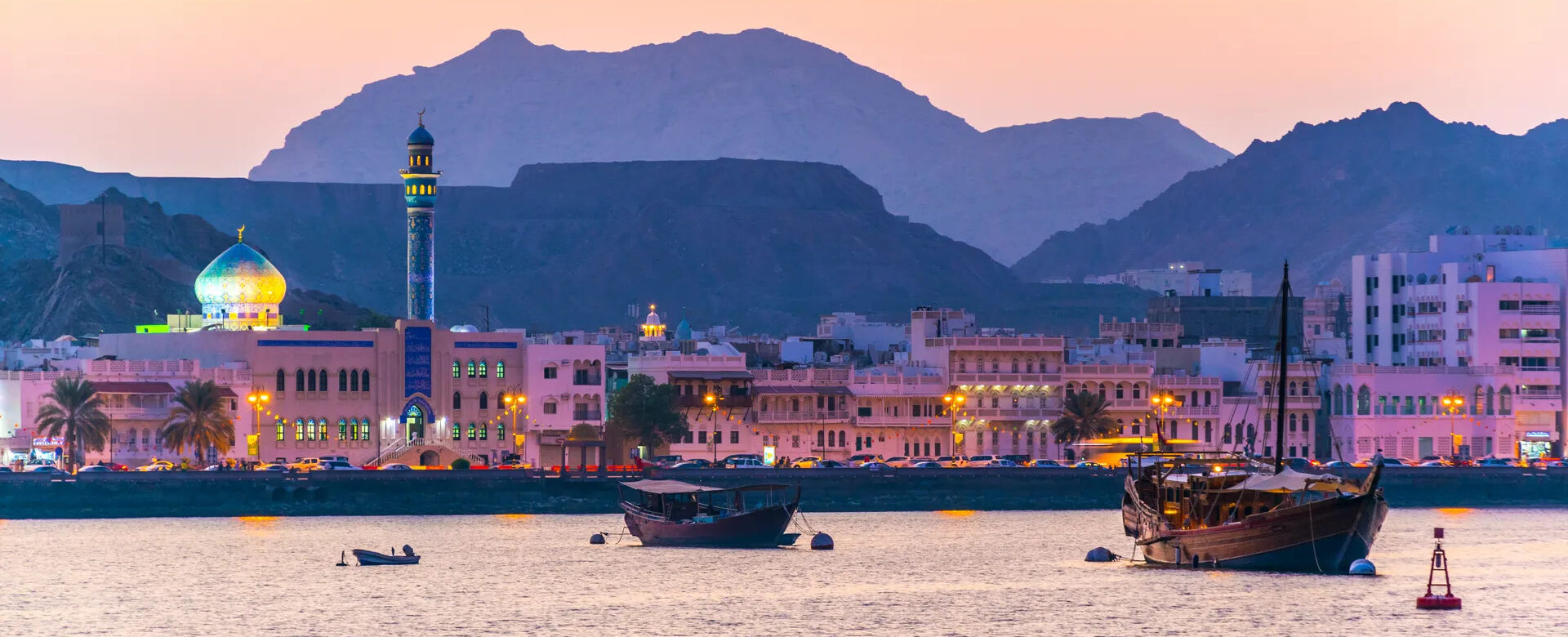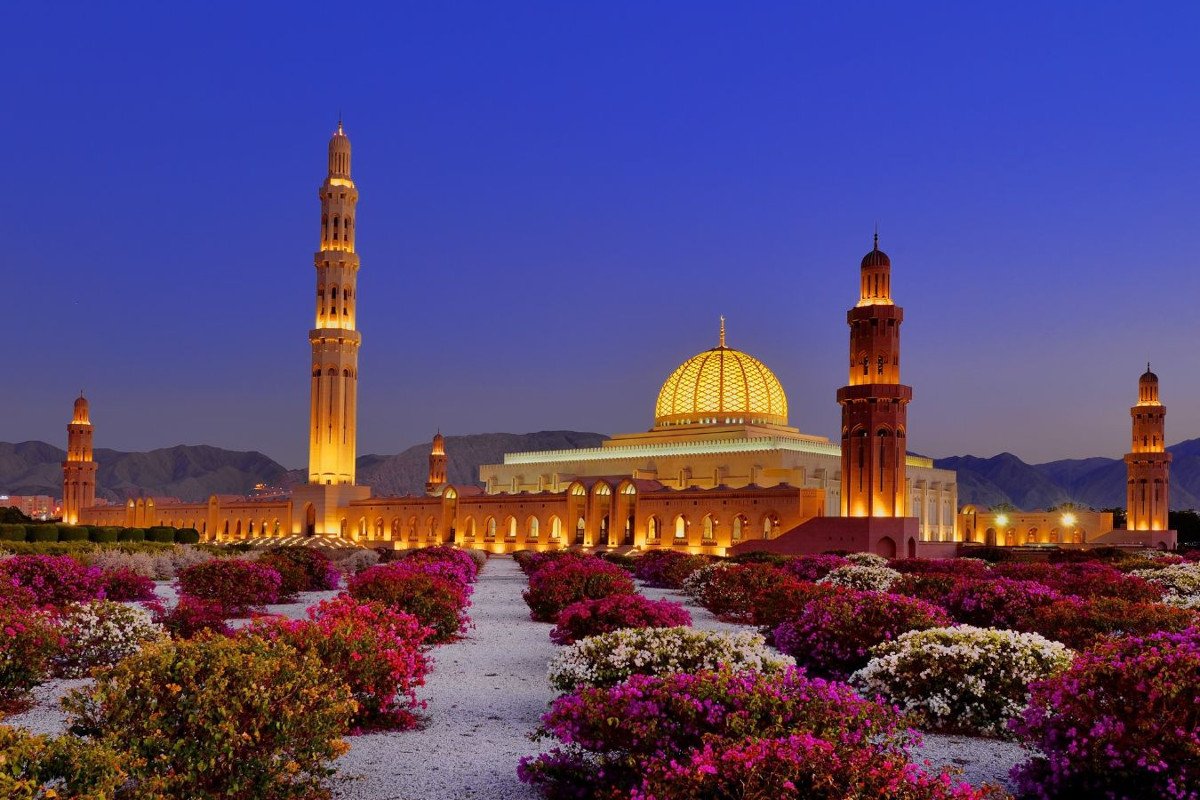Muscat
Muscat was designated as the capital of Oman in 1793, emerging as the heart of the nation’s impressive maritime empire during the 18th and 19th centuries.
Muscat, meaning ‘safe anchorage’, deeply integrates the sea into its identity. Cruise ships and container vessels arrive at the historic ports of Old Muscat and Mutrah, creating a vital link. Maritime activities significantly boost the local economy, particularly through the onshore refinery near Qurm. Additionally, they support the livelihoods of fishermen who work along the picturesque beaches of Shatti al-Qurm and Athaiba

In recent times, the coastline has evolved into a recreational haven, with popular spots like Al-Bustan and Bandar Jissah, as well as a nearly uninterrupted sandy beach that extends for over 200 kilometers all the way to the border with the United Arab Emirates (UAE) to the northwest.
Muscat was designated as the capital of Oman in 1793, emerging as the heart of the nation’s impressive maritime empire during the 18th and 19th centuries. Once influential over a significant stretch of the East African coastline, the city experienced a notable decline in the 20th century under Sultan Said bin Taimur, which made its fall from prominence particularly striking. Yet, history is shifting once again, and Muscat is reclaiming its vital role at the core of Omani life.

In the 14th and 15th centuries, Muscat functioned as a modest port, and it gradually gained significance as a freshwater stopover. However, the bustling port of Sohar overshadowed it, a situation the residents of Sohar’s Batinah region hope to repeat in the future. By the early 16th century, Muscat established itself as a trading hub, merchant vessels frequently heading to India. This growing prominence attracted the Portuguese, who seized control of the town in 1507. During this period, they built the city walls. While a renovated version of these walls, along with the two Portuguese forts, Mirani and Jalali, still stands today, Omani forces reclaimed the town in 1650, ending Portuguese dominance in the Gulf region.
For a significant part of the 20th century, Muscat remained somewhat isolated, its city gates firmly secured against outside influences until 1970. Then, under the leadership of Sultan Qaboos, the city experienced a revival. To accommodate the increasing number of vehicles, they created an opening in the city walls, allowing an influx of goods and services as Muscat expanded along the nearby coastline.
Interestingly, even with the new passageway, people still locked the city gates at a designated time each evening, until they eventually replaced them with an archway. This small gesture of locking the gates serves as a poignant symbol of a city that embraces modernity while cherishing its traditional essence.

